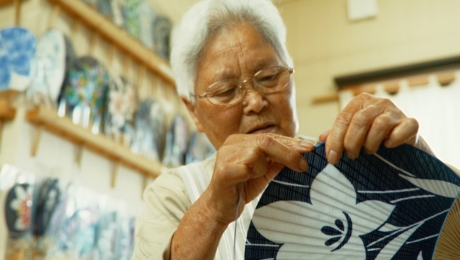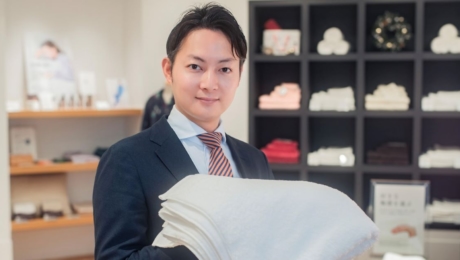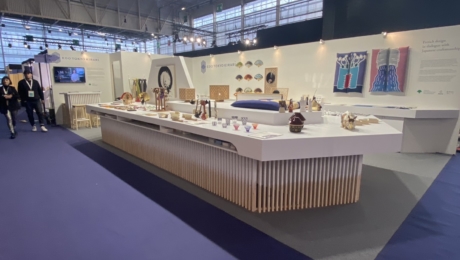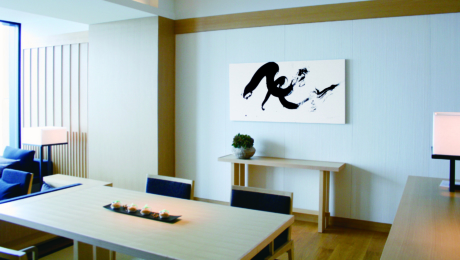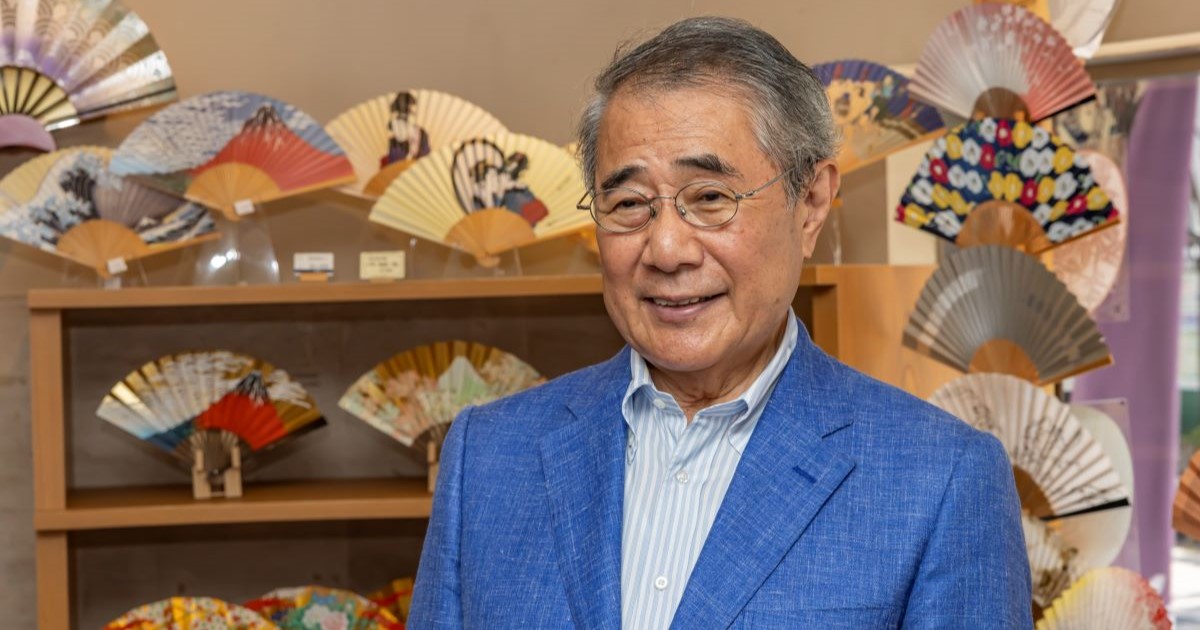
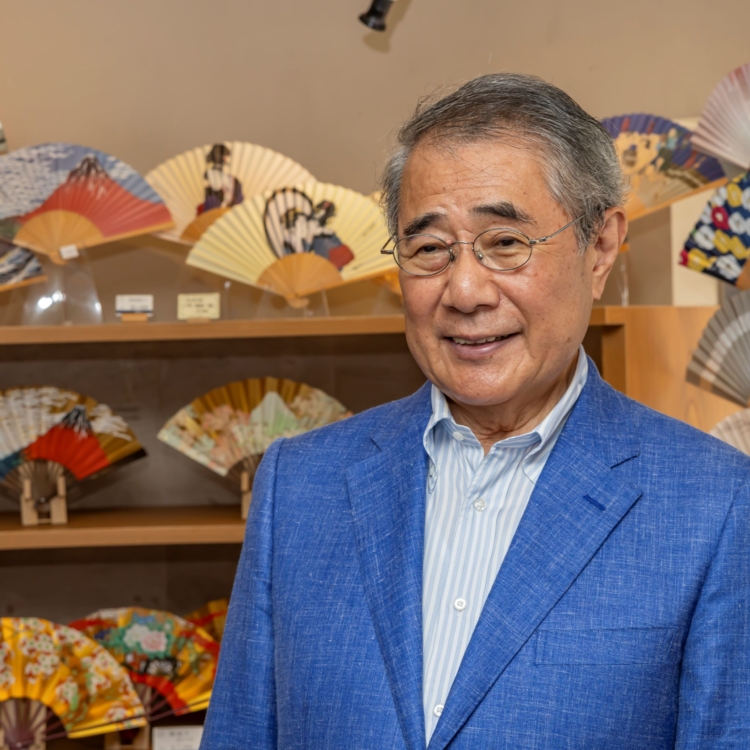
Keeping the Wheels of Innovation and Tradition Turning
2024.08.15
LIFEEstablished in the Edo period, Ibasen is a renowned for specializing in sensu and uchiwa, folding and fixed traditional Japanese fans, respectively. While deeply rooted in Edo traditions, the company continually produces new products to meet modern demands. In 2024, Ibasen has launched a range of new items, including a series featuring Edo patterns and collaborations with famous designers from Japan and abroad. We sat down with company president Nobuo Yoshida to discuss the source of their innovative designs and the origin of their flexible approach.
With every year, an increasing number of tourists buy fans as souvenirs in Japan.
“Our shop street sees many overseas visitors now. Most come here guided by Google Maps,” says Yoshida Nobuo, 14th head of Ibasen, founded in Nihonbashi in 1590.
This summer, responding to a surge in international tourists, Ibasen has released numerous new products. Among these, the Edo Pattern Sensu folding fans stand out, debuting with nine new designs.
“These fans feature patterns used in tenugui hand towels and yukata lightweight kimono from the Edo period. We created them hoping to share the ‘iki’ (chic) of Edo. Popular designs include the traditionalseigaihablue ocean wave pattern, kanji characters with the fish radical, the auspiciousasanohahemp leaf pattern andyukiwasnow ring pattern, thesayagatapattern of interlockingmanjicharacters, and even goldfish.”
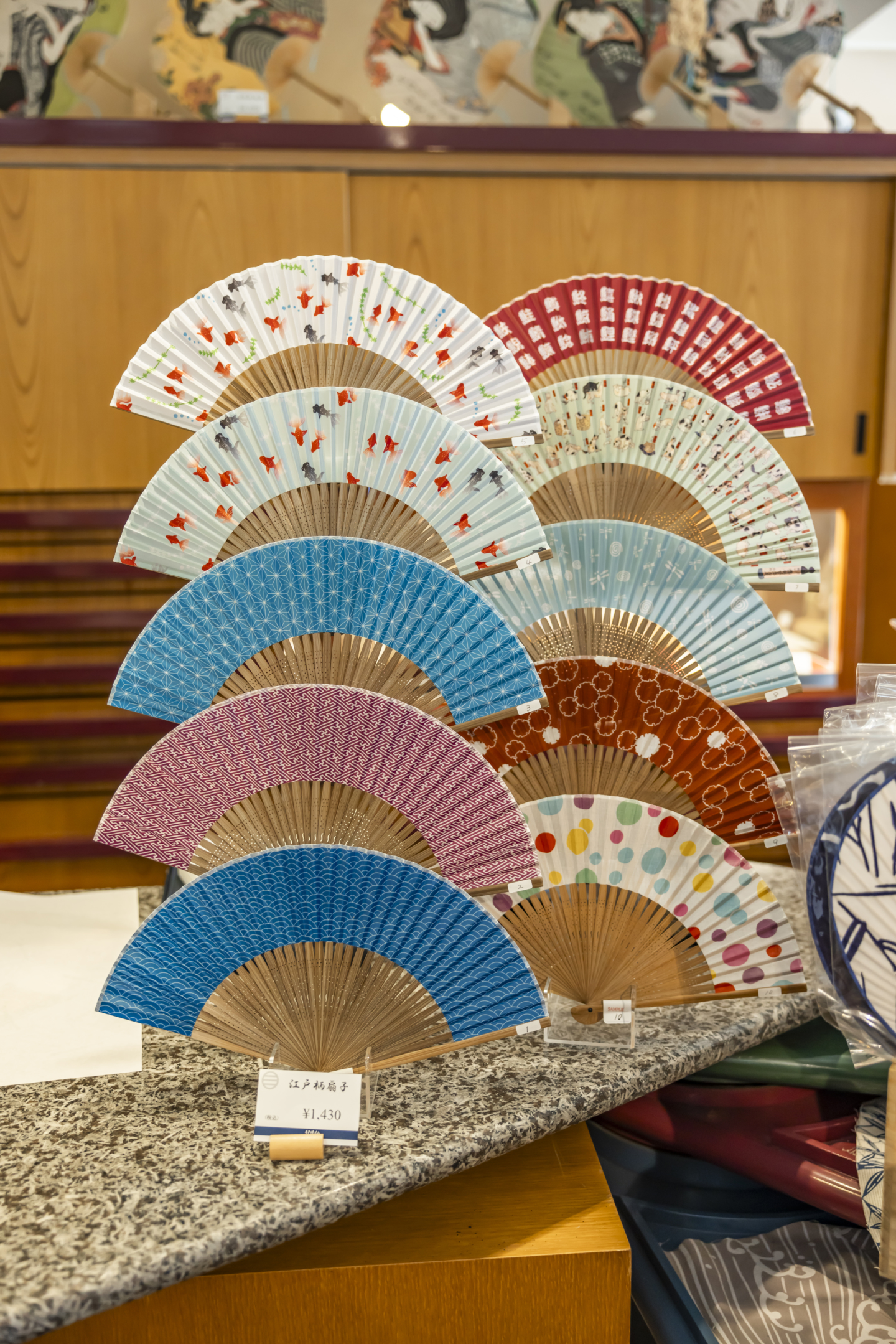
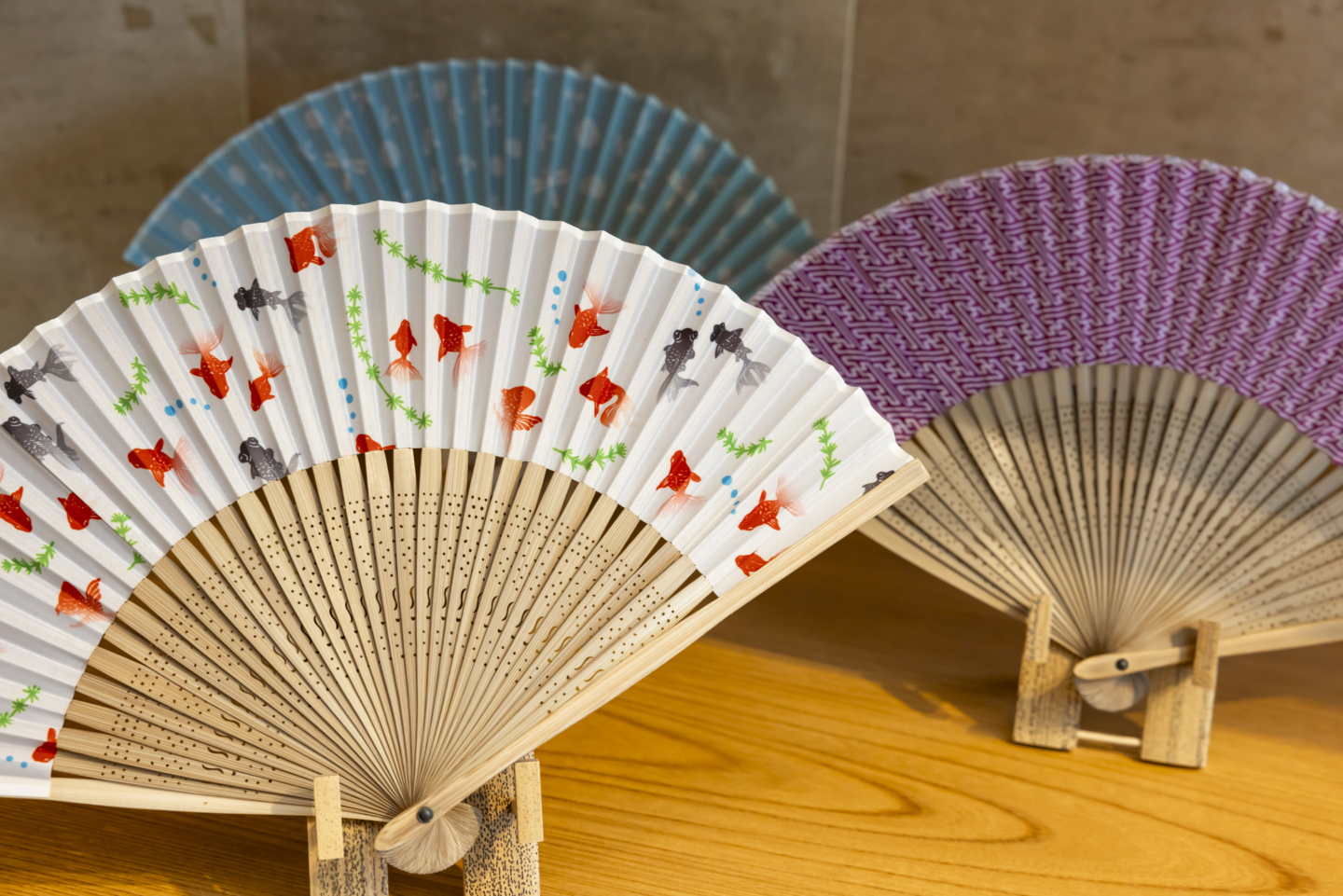
One unique offering is thesensufan featuring Edo-period ukiyo-e artist Utagawa Kuniyoshi’s famous workCats Suggested by the Fifty-three Stations of the Tokaido.
“In the late Edo period, we started incorporating ukiyo-e prints into our fans, doubling as a publisher for artists like Utagawa Toyokuni, Kuniyoshi, and Hiroshige. This time, we chose a work by Kuniyoshi, who was known for his love of cats. We couldn’t quite fit all 53 of the cats in, but the finished fan so densely packed with them is quite amusing, don’t you think?” Yoshida says with a laugh.
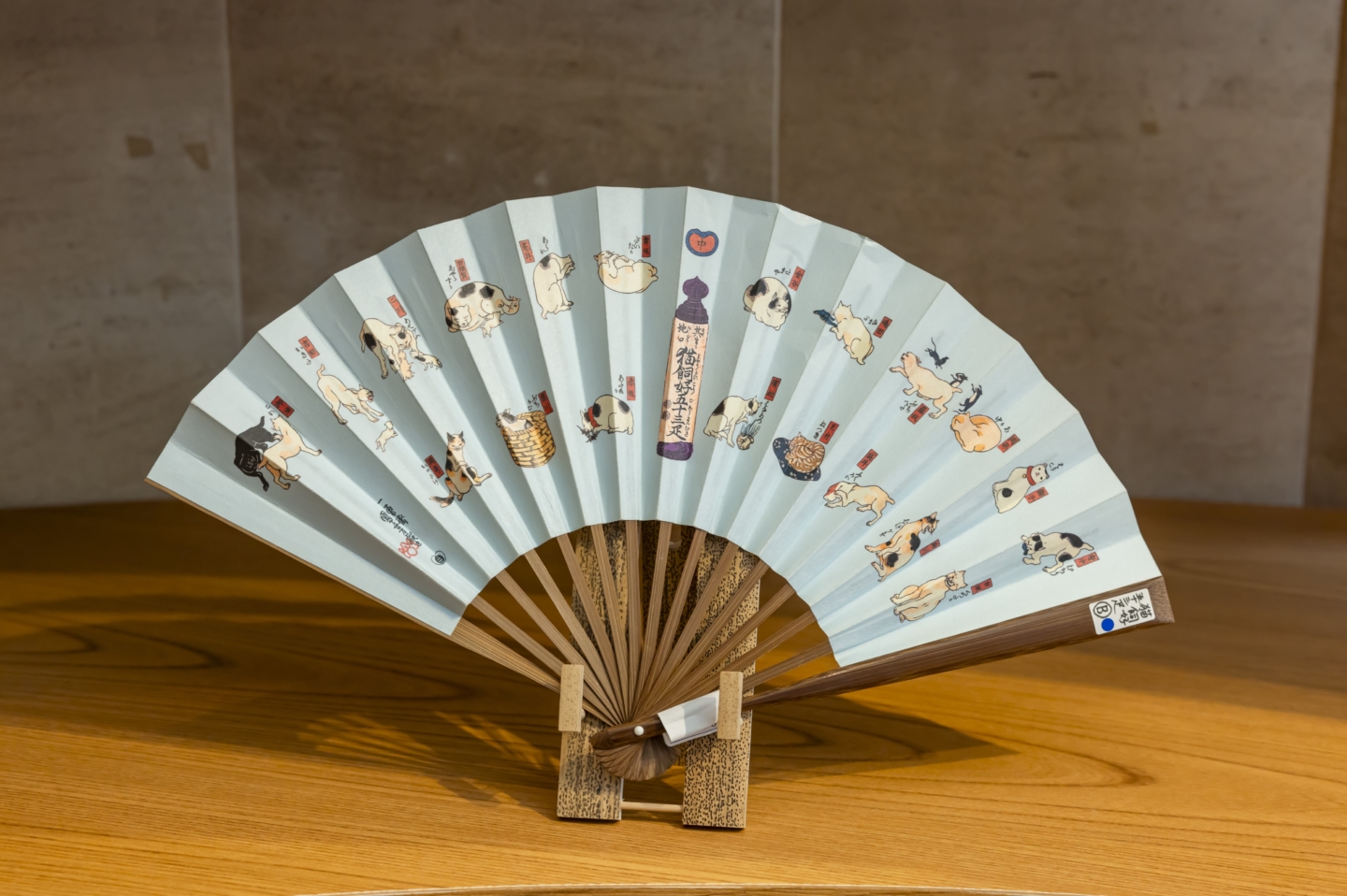
Ibasen continues to preserve the traditional shape of Edo fans, while also innovating through collaborations with contemporary designers. Notable recent works include the Junishi (Chinese Zodiac) series by Paris-based artist Jacques Averna and Byoshin Bunpo (“Progress by the Second”) series by Japanese men’s fashion brand yoshiokubo.
“The concept of the Chinese zodiac doesn’t exist in France, so we had to explain it to Jacques. He found it fascinating! As the fan unfolds, the animal figures stretch and expand, creating a certain dynamism. Kubo’s Byoshin Bunpo series is a play on the phrasenisshin geppo(fast daily progress), symbolizing rapid advancement—our only prompt for him was to capture the essence of Tokyo. Even in our new designs, we strive to keep hold of a sense of Edo or Tokyo. Our fans featuring motifs of Tokyo’s bustling cityscape or Tokyo Tower are designed to reflect a contemporary form ofiki, or chic.”
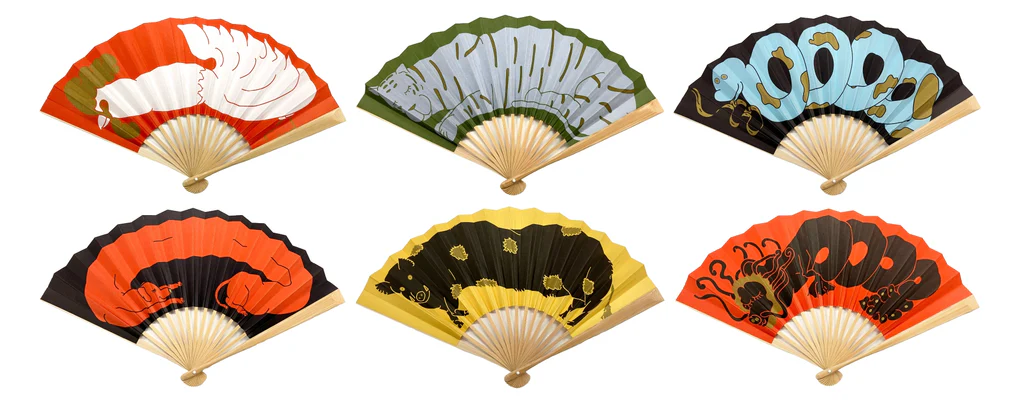
What is it, then, that drives Ibasen’s creativity and curiosity for such a steady stream of new products?
“Every September and October, after the summer season ends, our team discusses the direction for the coming year. It’s similar to how apparel manufacturers operate. Every year is a challenge—we cannot stop innovating! That’s how us Edokko (Edo natives) are: always seeking out novelty and finding a way to integrate it. Even historically, as a ukiyo-e publisher, we had to constantly release new, intriguing prints every month. That is the tradition that fuels our ongoing creativity,”
Yoshida explains with an easy smile, a sign of the Edo spirit that continues to inspire their relentless innovation.
PROJECT


